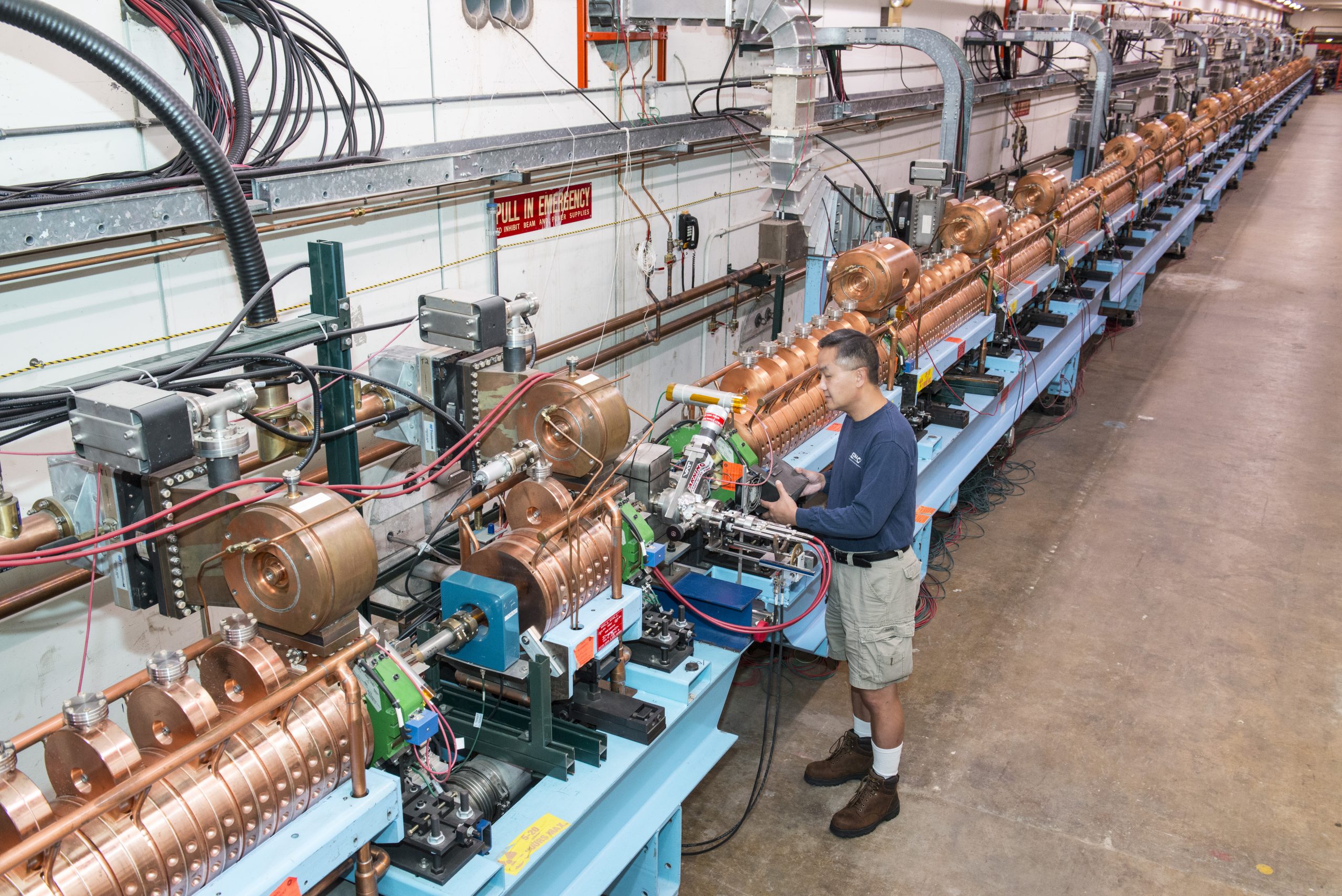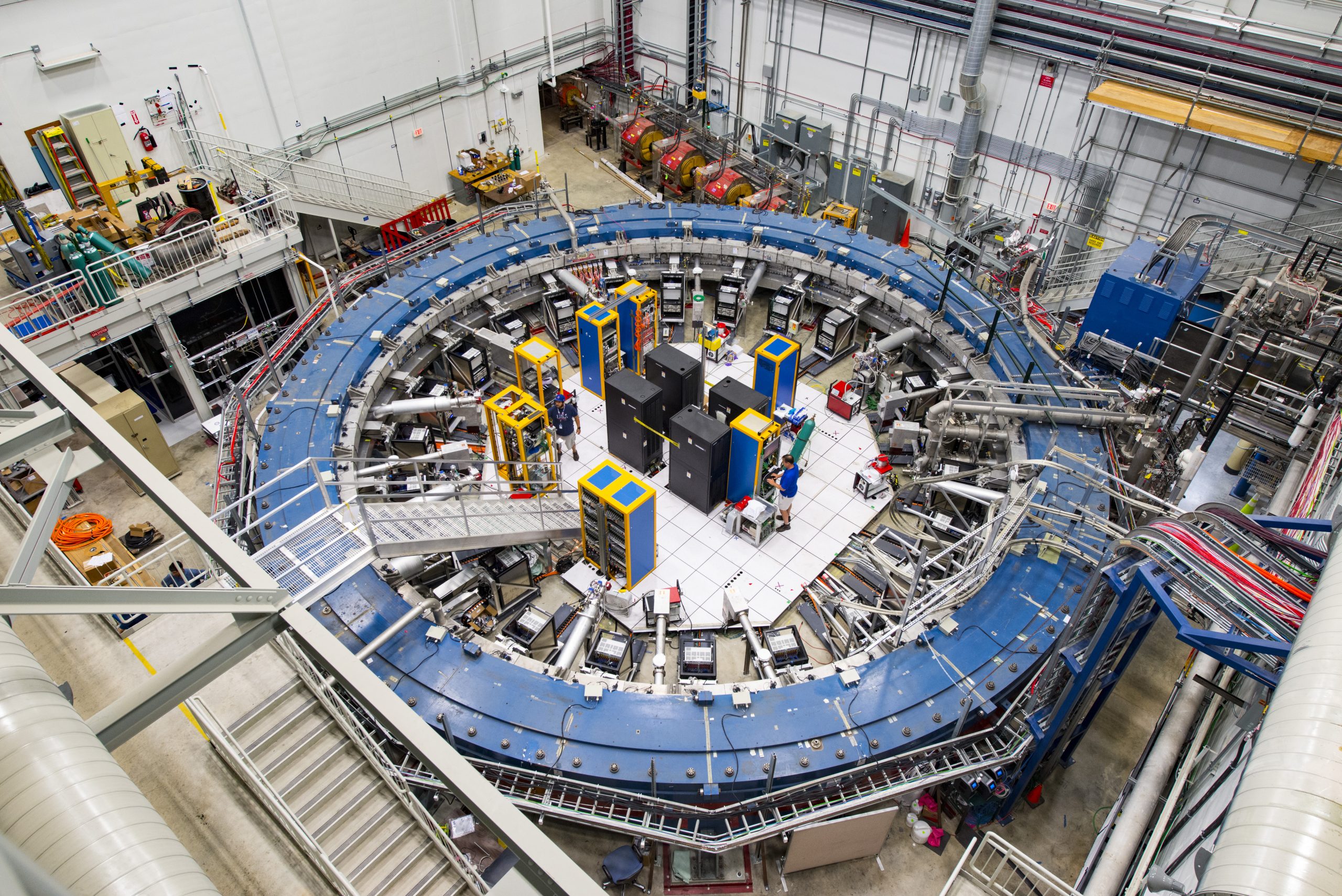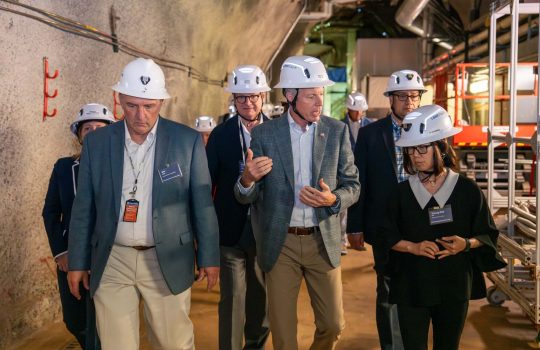Summer means hot days, pool parties and Fermilab’s annual accelerator shutdown, when crews of technicians enter the tunnels to upgrade and maintain the complex machines.
For many months Fermilab’s accelerator complex has been delivering quality beam to experiments, with record up times and delivery of protons. This means more data for Fermilab’s hungry physics experiments. The proton beam delivered by the accelerator complex first reached a milestone of 700 kilowatts in 2016 and has been regularly running at this impressive power since around Christmas.
“It’s been a very good year for beam delivery,” said Fermilab’s Duane Newhart, deputy head of accelerator operations. “We’ve broken just about every record every machine has set this past year.”
The last two shutdowns were focused on upgrades to improve the accelerator complex, part of the Proton Improvement Plan.
“This shutdown is more maintenance-driven,” said Fermilab physicist Cons Gattuso, who coordinates the installation and maintenance activities during the shutdown. “While we have some of the best particle accelerators in the world, some of the equipment we operate is 40 years old. And we ask it to do more and more.”
The accelerator performance should see some gains when the machines come back online around mid-September. And there are still major projects in the works.
Technicians will finish the second half of an upgrade to the linear accelerator, or Linac. The required components, called Marx modulators, provide high voltage for the amplifiers and were designed and built at Fermilab. As modern replacements for old vacuum tubes that are hard to repair or replace, the new pieces of tech will improve the Linac’s reliability. One particular kind of vacuum tube is known as the 1123.
“There are about 90 left in the world, and Fermilab owns all of them,” Newhart said.

The Fermilab Linac will undergo upgrades to improve its reliability during the accelerator shutdown. Photo: Reidar Hahn
Other work includes changing out a component known as a target, which helps produce particles for study — in this case, neutrinos. Accelerator teams will also add components to improve beamline diagnostics, modify vacuum systems, and replace and repair magnets. One particular magnet in the Main Injector accelerator will need some attention.
“We haven’t had to change out a Lambertson magnet in the Main Injector accelerator since things were installed, some 25 years ago,” said Gattuso, referring to the lab’s flagship accelerator. “This is a testament to the quality and resilience of the components.”

The Muon g-2 experiment takes advantage of the lab’s powerful accelerator complex. Fermilab scientists have already collected twice the amount of total data gathered over its four years at Brookhaven National Laboratory, where the experiment ran prior to coming to Fermilab. Photo: Reidar Hahn
This will be the first shutdown since Fermilab’s Muon Campus came online last year. Technicians will work on the vacuum system for the upcoming muon-to-electron conversion experiment, known as Mu2e, completing about half the beamline that connects the experiment to the Muon Campus Delivery Ring by the end of the shutdown. They’ll also add devices that help reduce the spread of the particle beam for the Muon g-2 experiment.
Muon g-2 reuses a giant, 50-foot-diameter particle storage ring from a similar experiment that studied properties of muons at Brookhaven National Laboratory from 1997 to 2001. The ring was transported to Fermilab in 2013 to take advantage of the lab’s powerful accelerator complex and officially started up in 2018. Scientists have already collected twice the amount of total data gathered over four years at Brookhaven.
“We have a plan in place to double the muon flux this summer with a number of upgrades,” said Fermilab scientist and Muon g-2 co-spokesperson Chris Polly. “Hopefully we emerge from the shutdown taking the equivalent of one full Brookhaven data set every month.”



